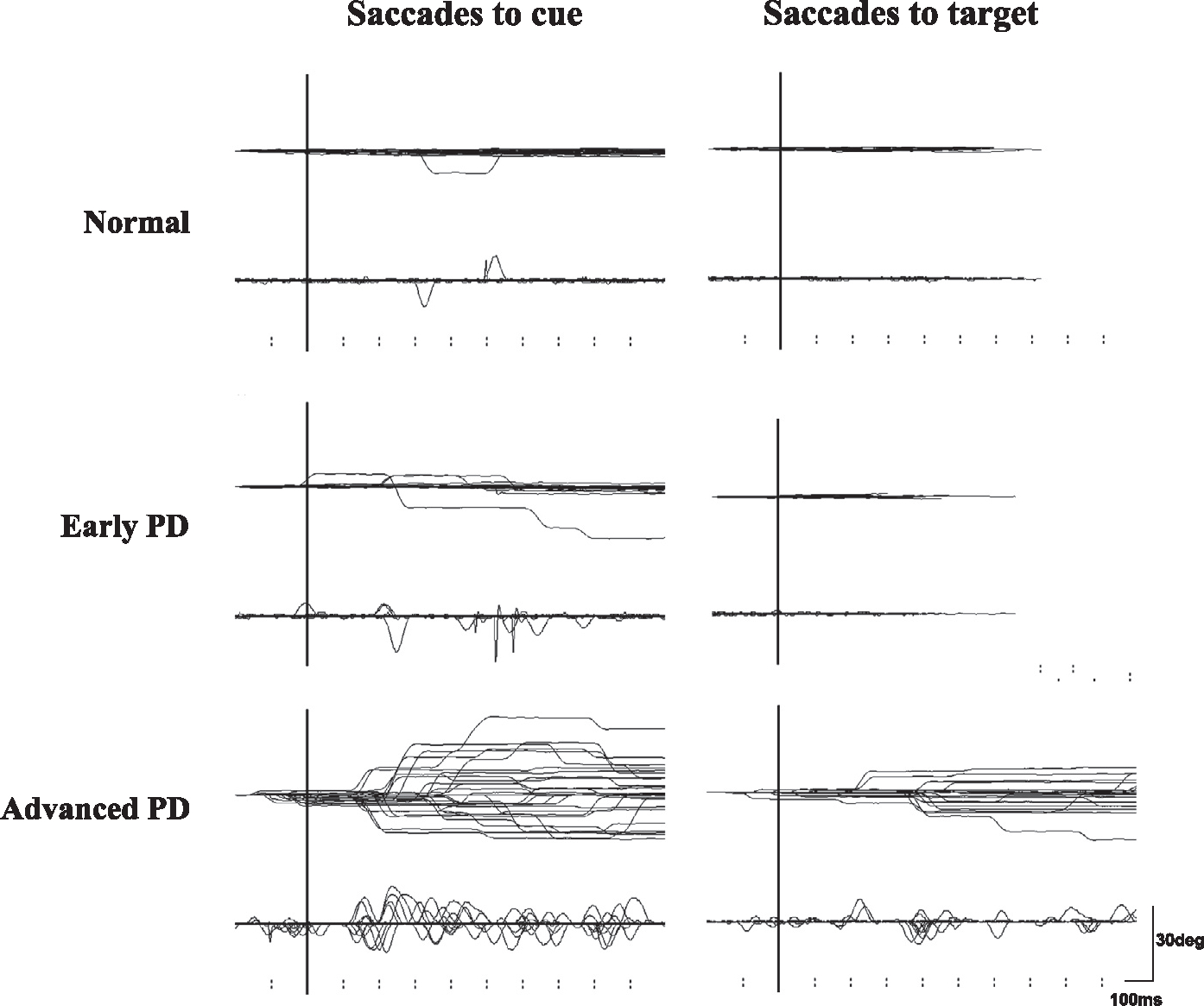Fig. 4.

Traces of saccades to cue and saccades to target. Inadvertent eye movements made during the delay period of MGS (saccades to cue) and during the hand reaction time (RT) task (saccades to target) in a normal subject (top row) and in a single patient with early and advanced PD (middle and bottom rows). See text for details of saccades to cue. In the hand RT task, the subjects held a microswitch button which was connected to the microcomputer and allowed them to initiate and terminate a trial by pressing and releasing the button with their thumb. A central spot of light comes on shortly after the subject presses a button, and it stays on throughout each trial. The subjects were instructed to fixate on it continuously. After a random period (2–6.5 s), another spot is illuminated at one of various eccentricities (5–30 degrees) and the subjects release the button as soon as possible while fixating on the central cross point. Inadvertent saccades made to the target are termed “saccades to target.” Note that in PD patients, both the frequencies of saccades to cue and those to target are higher than in normal subjects. The abscissa is the time axis and the ordinate gives the angle. Reproduced with permission from Terao et al. (2013).
